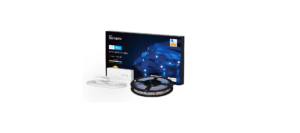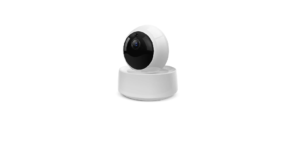Sonoff D1 Wi-Fi Smart Dimmer Switch Quick Guide

Power off

Please install and maintain the device by a professional electrician. To avoid electric shock hazard, do not operate any connection or contact the terminal connector while the device is powered on!
Wiring instruction

The device can only connect incandescent light bulb and dimmable LED light.
Make sure all wires are connected correctly
Download the ewelink App

Power on

After powering on, the device will enter the pairing mode by default during the first use. The connected light enters the “change from
It will exit the pairing mode if the device is not paired within 3mins. If you need to enter this mode again, please power off and restart the device until the connected light enters the “change from bright to dim and cycle the mode”
Add device

Tap “+” and select “Add Device”, then operate following the prompt on the Aon.
Pairing method for the device and SONOFF RM433 remote controller:

Short press any button on the RM433 remote controller within 55 after powering on until you hear “BI”, which indicates all buttons are paired success Tay.
The RMa3s remote controllers no includes ease purchase I separately.
USER MANUAL

Scan the QR code or visit the website to learn about the detailed user manual and help
FCC compliance statement
- This device complies with part 15 of the FCC Rules. Operation is subject to the following two conditions:
- This device may not cause harmful interference, and
- This device must accept any interference received, including interference that may cause undesired operation.
- Changes or modifications not expressly approved by the party responsible for compliance could void the user’s authority to operate the equipment
Note: This equipment has been tested and found to comply with the limits for a Class B digital device, pursuant to part 15 of the FCC Rules.
These limits are designed to provide reasonable protection against harmful interference in a residential installation, This equipment generates, uses and can radiate radio frequency energy and, if not installed and used in accordance with the instructions, may cause harmful interference to radio communications. However, there is no guarantee that interference will not occur in a particular installation. this equipment does cause narmean interference to radio or television reception, which can be determined by turning the equipment of ang on, the encouraged to try to correct the interference by one or more of the following measures:
- Reorient or relocate the receiving intention.
- Increase the separation between the equipment and receiver.
- connect the equipment into an outlet on a circuit different from that to which the receiver is connected
- Consult the dealer or an experienced radio/TV technician for help.
WEEE Disposal and Recycling Information
All products bearing this symbol are waste electrical and electronic equipment (WEEE as in directive 2012/19/EU) which should not be mixed with unsorted household waste. Instead, you should protect human health and the environment by handing over your waste equipment to a designated collection point for the recycling of waste electrical and electronic equipment, appointed by the government or local authorities. Correct disposal and recycling will help prevent potential negative consequences to the environment and human health. Please contact the installer or local authorities for more information about the location as well as terms and conditions of such collection points.
DOWNLOAD PDF LINK





